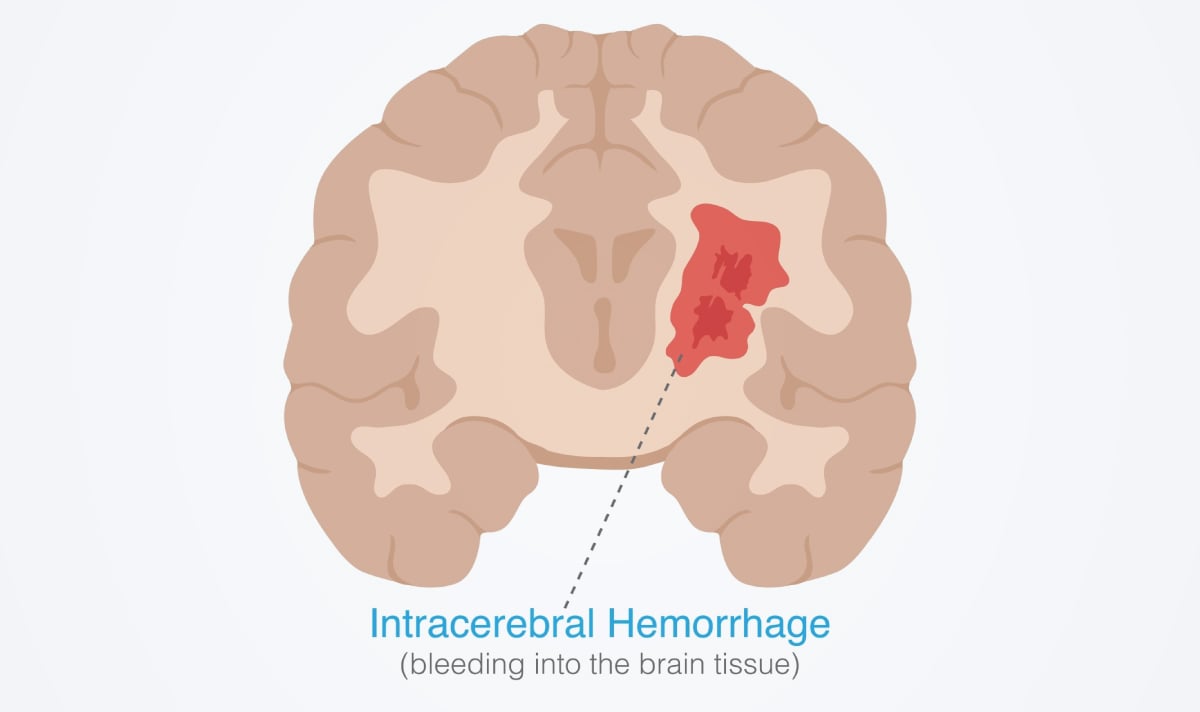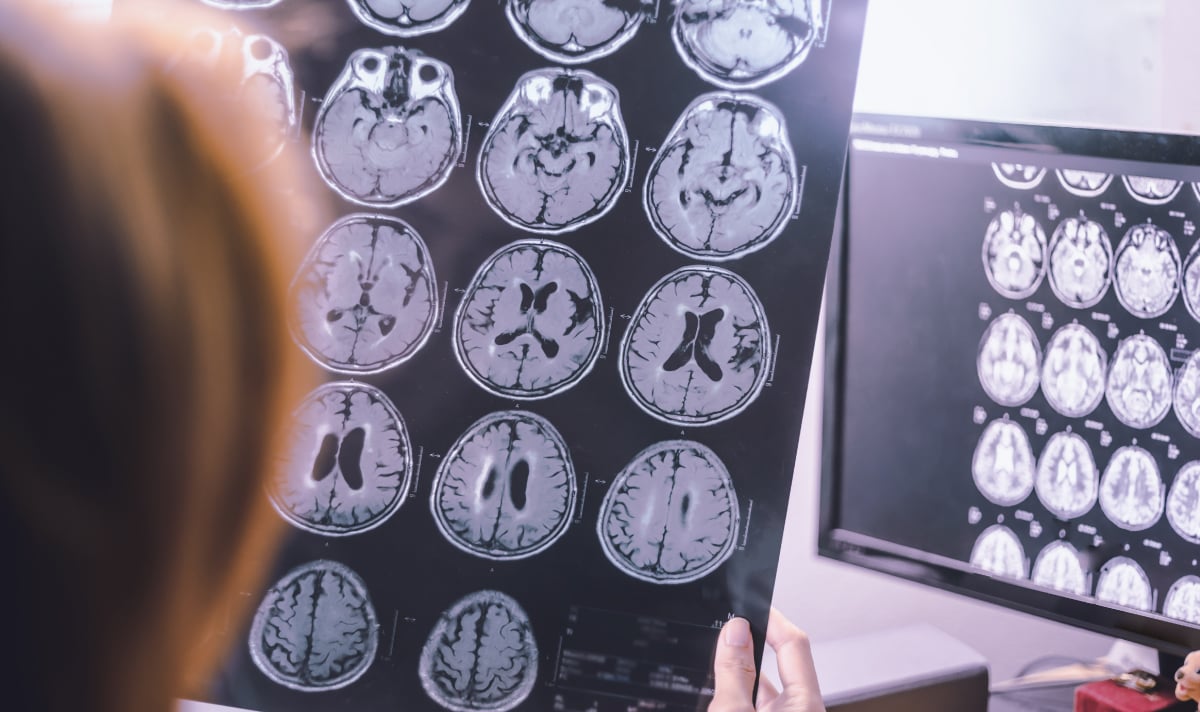Bleeding in the brain is one of the stroke-related conditions that require urgent treatment, as when blood spreads in the brain tissue, it can cause a lack of oxygen and severe damage to the brain, leading to disability and death.
What is Bleeding in the Brain?
Bleeding in the brain (Intracerebral Hemorrhage: ICH): is a medical emergency that occurs when there is direct bleeding into the brain tissue, resulting in brain cell destruction and increased pressure in the skull. This condition is life-threatening and requires urgent treatment.

Causes of Bleeding in the Brain
Bleeding in the brain often results from abnormalities in the brain’s blood vessels. The main causes include:
- High blood pressure is the most common cause because hypertension causes the blood vessel walls to deteriorate and easily rupture.
- Head injuries such as car accidents or falls, etc.
- Aneurysm causing the blood vessel walls to weaken and rupture.
- Use of blood-thinning medications such as Warfarin, which increases the risk of bleeding.
- Abnormal cerebral blood vessels such as Arteriovenous Malformation (AVM).
- Liver disease or bleeding disorders affecting blood clotting.

Symptoms of Brain Bleeding
- Severe headache, especially when sudden.
- Weakness or numbness of the face, arm, or leg on one side.
- Difficulty speaking or slurred speech.
- Abnormal vision, such as double vision or loss of vision, etc.
- Loss of balance or dizziness.
- Nausea or vomiting.
- Loss of consciousness or seizures.

Diagnosing Brain Bleeding
Doctors will use various methods to diagnose brain bleeding such as:
- Neurological physical examination.
- Computed tomography (CT Scan – CTA) to locate and measure the size of the bleeding.
- Magnetic resonance imaging (MRI Scan – MRA) to view detailed images of the brain and vessels.
- Cerebral Angiography to detect abnormalities in the blood vessels.

How is Brain Bleeding Treated?
Treatment for brain bleeding depends on the size and location of the bleed, as well as the underlying cause. The main treatment methods include:
- Supportive care management such as oxygen therapy and blood pressure control, etc.
- Medication to reduce brain swelling or control seizures.
- Surgery in cases of significant bleeding or accessible locations.
- Surgical insertion of a brain drain.
- Surgery to remove the bleed from the brain.
- Brain rehabilitation such as physical therapy or speech therapy after symptoms improve.

How to Prevent Bleeding in the Brain?
Preventing brain bleeding can be achieved by reducing risk factors, as follows:
- Maintain normal blood pressure levels by eating healthy, exercising regularly, and taking prescribed medications.
- Avoid smoking and alcohol consumption as they increase the risk of high blood pressure and blood vessel damage.
- Be careful to avoid head injuries such as wearing helmets when riding motorcycles.
- Regular health check-ups to screen for stroke risk factors.
Bleeding in the brain is a serious condition that requires urgent care. Recognizing symptoms and risk factors can help prevent and quickly address this condition. Overall health management such as maintaining blood pressure, avoiding risk behaviors, and regular health checks can help reduce the likelihood of brain bleeds.
Specialists in Treating Brain Bleeding
Dr. Yodruk Prasert is a brain and nervous system surgeon at the Brain and Spinal Hospital.
You can click here to make an appointment yourself.
Hospitals Specializing in Treating Brain Bleeding
Brain and Spinal Hospital is ready to investigate causes, provide treatment, rehabilitation, and prevention of brain bleeding with a specialized brain physician team, nursing team, interdisciplinary team, and advanced treatment technologies to reduce severity and enable patients to regain confidence in their lives.
Basic Brain Health Screening Package starting at 20,400 Baht
